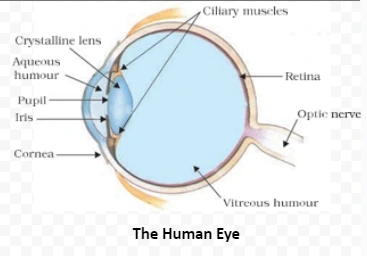![]() 15 Dec 2023
15 Dec 2023
The human eye is one of the most valuable and sensitive sense organs. It enables us to see the wonderful world and the colors around us. On closing the eyes, we can identify objects to some extent by their smell, taste, sound they make or by touch. It is, however, impossible to identify colors while closing the eyes. Thus, of all the sense organs, the human eye is the most significant one as it enables us to see the beautiful, colorful world around us.

In summary, the human eye is a remarkable organ, intricately designed with components like the lens and ciliary muscles that enable focus and adaptation. However, as age takes its toll, issues like cataracts may arise, affecting vision.
<div class="new-fform">
</div>
